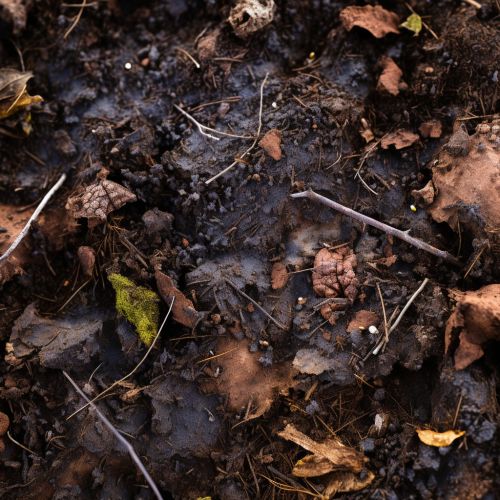Soil Microbiology
Introduction
Soil microbiology is the study of organisms in soil, their functions, and how they affect soil properties. It is believed that between two and four billion years ago, the first ancient bacteria and microorganisms came about in Earth's oceans. These bacteria could fix nitrogen, in time multiplied, and as a result released oxygen into the atmosphere. This led to more advanced microorganisms, which are essential to cycling nutrients and sustaining higher life forms.
Soil Microorganisms
Soil microorganisms can be classified as bacteria, actinomycetes, fungi, algae and protozoa. Each of these groups has characteristics that define them and their functions in soil.
Bacteria
Bacteria are tiny, one-celled organisms generally 4/100,000 of an inch wide (1 µm) and somewhat longer in length. What bacteria lack in size, they make up in numbers. A teaspoon of productive soil generally contains between 100 million and 1 billion bacteria. That is as much mass as two cows per acre.
Bacteria fall into four functional groups. Most are decomposers that consume simple carbon compounds, using the carbon to build their bodies and releasing carbon dioxide into the air. Many of the bacteria in soil are mutualists that form partnerships with plants. A third group of bacteria change nitrogen gas from the air into a form plants and other microorganisms can use. Some soil bacteria are shape-shifters and can adjust their metabolism to break down the specific types of organic matter that are available nearby.
Actinomycetes
Actinomycetes are a group of bacteria that form thread-like filaments in the soil. They are responsible for the distinctive scent of freshly exposed, moist soil. Actinomycetes are crucial decomposers that break down organic material to produce a rich humus in soil. They also produce secondary metabolites, including antibiotics.
Fungi
Fungi are the second most abundant organisms in soil, after bacteria. Fungi are larger than bacteria and actinomycetes, and have long, thread-like bodies. They are responsible for the decomposition of many difficult substances in soil, including complex carbohydrates. Some fungi form symbiotic relationships with plants, aiding in nutrient uptake.
Algae and Protozoa
Algae and Protozoa are two other groups of organisms found in soil. Algae are photosynthetic organisms that capture energy from the sun and convert it into organic material. Protozoa are single-celled animals that feed primarily on bacteria, but also eat other protozoa, soluble organic matter, and sometimes fungi.
Soil Microbial Processes
Soil microorganisms carry out a range of processes that are important for soil health and fertility. These include decomposition, nitrogen fixation, and soil structure development.
Decomposition
Decomposition is the process by which organic substances are broken down into simpler organic matter. It is largely carried out by bacteria, fungi, and other organisms through processes such as predation and symbiosis.
Nitrogen Fixation
Nitrogen fixation is the process by which nitrogen in the atmosphere is converted into ammonia. Biological nitrogen fixation is carried out by a number of bacteria, known as diazotrophs. Some nitrogen-fixing bacteria, such as Rhizobium, live in the root nodules of legumes. Others, such as Azotobacter, are free-living in the soil.
Soil Structure Development
Soil microorganisms also play a crucial role in the development of soil structure, which is key for plant growth. They do this by producing sticky substances that bind soil particles together, creating aggregates. This improves soil structure by increasing its capacity to hold water and nutrients, and promoting root penetration.


Soil Microbial Ecology
Soil microbial ecology is the study of the microbes in soil, their interactions with each other, plants and animals, and their role in nutrient cycling and ecosystem function. The field has been revolutionized in recent years by the development of molecular techniques, which have allowed an unprecedented exploration of the microbial community in soil.
